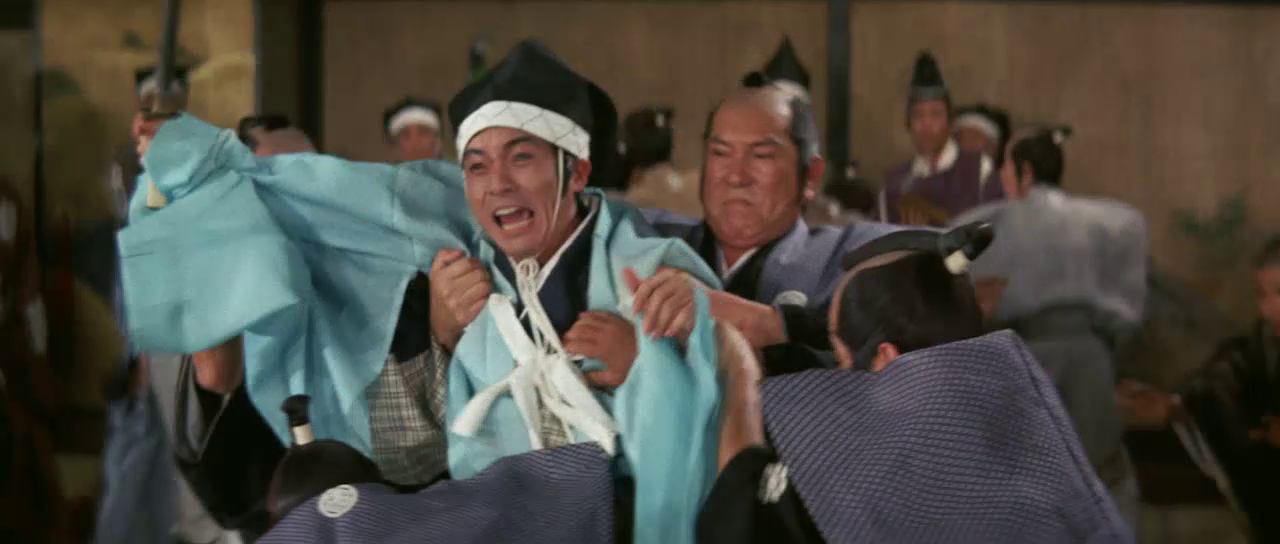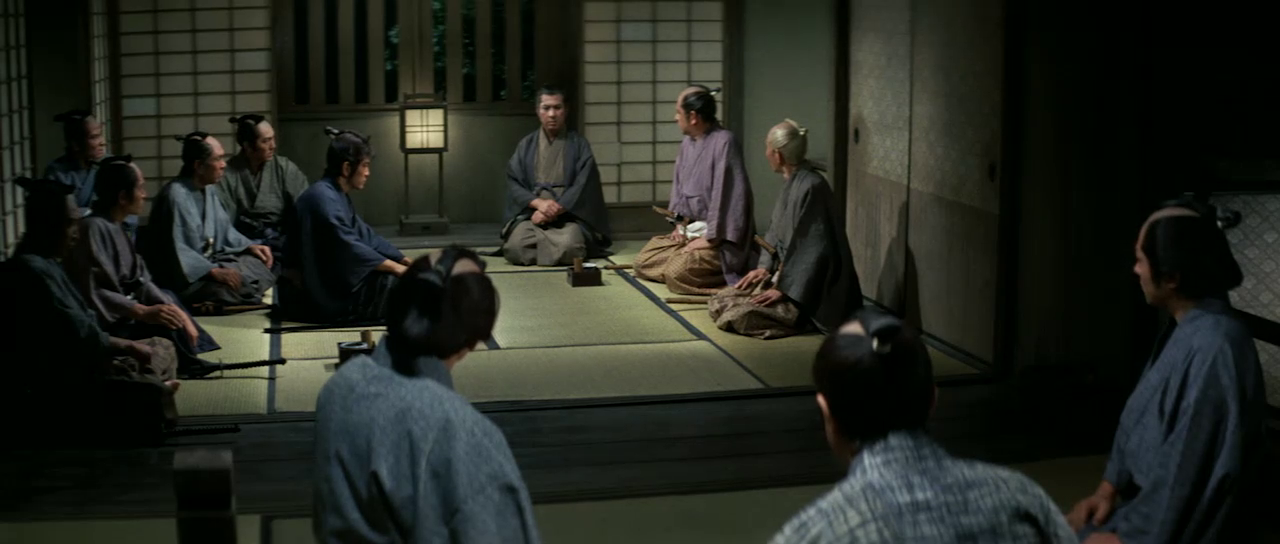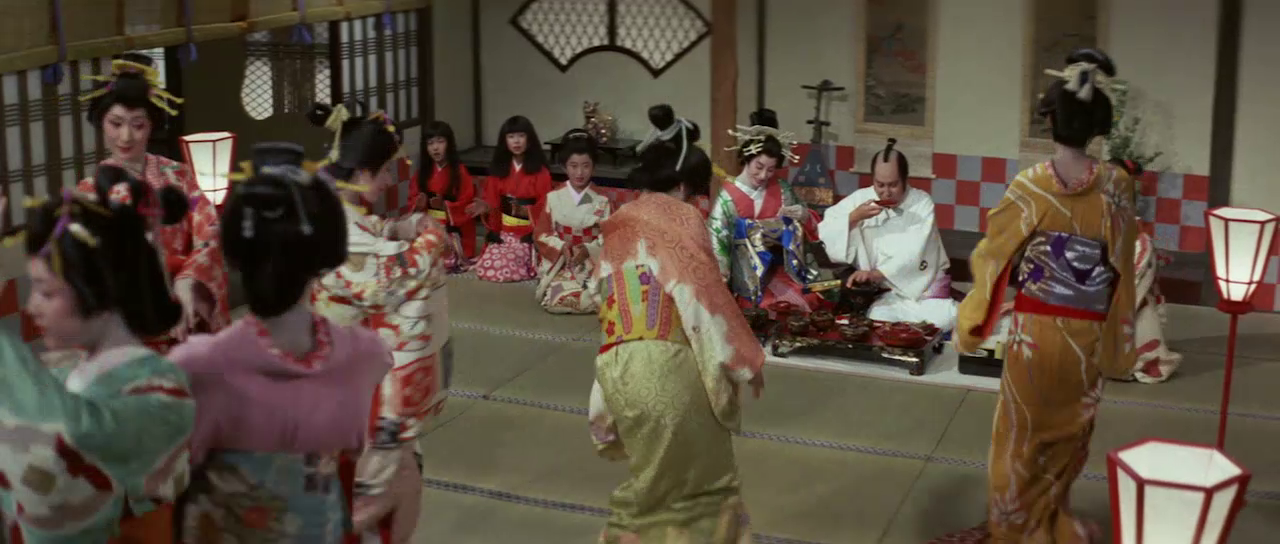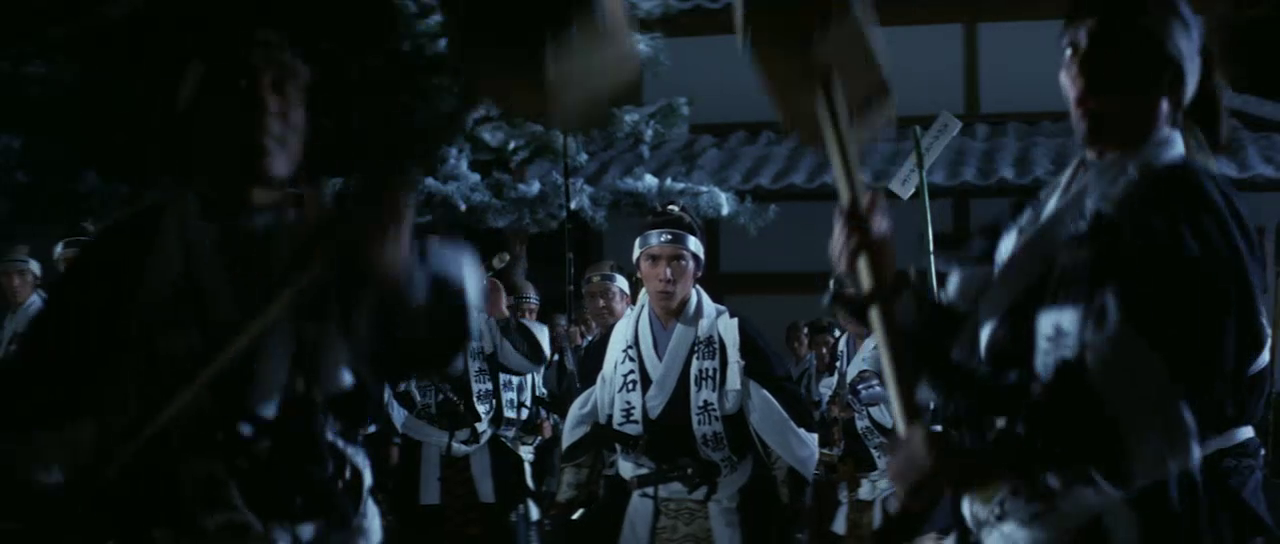Every culture has some historical events or stories that, long after they have happened or verbalized, keep speaking to the minds of people. One event that remains alive within the fabric of Japanese culture, one that keeps being revisited, retold and revisualized, is the Ako Incident, where a band of ronin, after a year of planning, avenged the death of their master Asano Naganori.
While the survival of such stories and events within the societal fabric often serves political purposes – the story of the Forty-Seven Ronin, for instance, celebrated and glorify patriarchal values like sacrifice, loyalty, and honour, it also culminates in a variety of cultural and artistic adaptations. Many well-known directors, like Kenji Mizoguchi, Hiroshi Inagaki and Kon Ichikawa, have delivered their artistic vision of this historical event for the spectator’s enjoyment.
Another director who visualized this historical story for the silver screen is the legendary director Kinji Fukasaku. While he remains most well-known among audiences for his contributions to the Yakuza and crime genre, he also created sci-fi, thrillers – Battle Royale (2000) – and, of course, a series of period-drama. Can Fukasaku, who created many yakuza classics, offer audiences a period drama that can be counted among the classics of the genre?
Review
During the Genroku Ero, the cruel ways of the fifth Tokugawa Shogun causes the crumbling of forty-eight samurai families, leaving over 30,000 samurai without a master and a home. Yet, despite the ongoing injustice or the twisted justice, no one dared plotting against the dictatorial government.
One day at Edo Castle, Kira-dono (Nobuo Kaneko), upon hearing that Asano-dono (Teruhiko Saigo) has accepted the arrangement for Kajikawa to represent Lady Keishoin for the meeting wth the imperial messenger, starts telling others how unreliable Asano-dono is. While Asano-dono, who can hear every humiliating signifier, can keep his cool, he ultimately cracks and attacks him.
The judgement is swift but unfair. While the Asano clan is dissolved and every retainer is forced to life as a ronin, Kira-dono receives no punishment whatsoever. Many of Asano’s former retainers hope to swiftly take revenge for the ravaging injury inflicted by Kira and the government, but Oishi-dono (Yorozuya Kinnosuke) demands them to wait.
The Fall Of Ako Castle will, of course, be considered a simple narrative celebrating loyalty, yet a deeper glance at the signifiers expressed within the narrative and the way the story unfolds reveals a film that explores the societal danger of dictatorial power, of having one person hold all power with his signifiers. If a subject is allowed to embody the law and is granted a ‘godly’ position where every signifier he utters is truth, a law that harshly regulates and rewrites social interactions, it creates a societal dynamic where the law does not serve justice and the societal Good, but merely pleases the self-interests of those who have power – fair investigations crumble and swift punitive action is taken. The law, by becoming infected by the subject, transforms into something criminal. The narrative of The Fall of Ako Castle asks the following question to the spectator: is it right to meekly abide by a law that, by becoming perverted, merely protects the ‘harmony’ of the hierarchal structure?
In this light, the decision of Oishi and his ronin to take revenge is not simply born from the duty to uphold the honour of their late lord, but also from the lingering desire to radically refuse, with a burst of vengeful violence, the unfair criminal dictatorial law. While the act of revenge does not transgress the relational dynamics prescribed by bushido, the very act does attain a revolutionary flavour by brutely betraying the demanded loyalty to the Shogun by violently communicating their refusal of the shogun’s signifiers as fair law (Narra-note 1). Their act of revenge is, in other words, an attempt to right the wrong that befell them and to confront the S hogun with the fallibility of his written law.
The scheme to exact revenge for Asano’s unfair death should be contrasted with the scheming of other clans within the narrative. The latter kind of scheming is, just like the former, a direct result of the problematic transformation of the Shogun’s signifiers into infallible law. Yet, the latter kind of scheming, a scheming in response to the cruel and destructive signifiers of the dictatorial shogun, does not aim to further one’s rank at court and heighten to prosperity of one’s clan, but to ensure that one’s position, one’s fiefdom and/or one’s honour as samurai remains secure. This scheming thus essentially aims to avoid creating a situation of responsibility that invites the undisputable Word of the Shogun, the terrifying Word that can cause the destruction of one’s clan, the dismantling of one’s fiefdom, and the injuring of one’s honour.
Given the emphasis on the cruel nature of the Shogun’s law in the narrative, it is somewhat disappointing that Koji Takada, the screenwriter, did not emphasize the dilemma of the Shogunate officials and the pressure of the admiring populace on the government more overtly. In Takada‘s version of the narrative, it seems that the mere contrast between lawfully abiding by the precepts of bushido and the violent transgression of the Shogun’s law was enough for him to right his wrong and to change course to protect the ‘harmony’ of the Edo societal system.
The Fall Of Ako Castle might be a long movie – it clocks in at 158 minutes, but the length of the film serves the final emotional denouement. The slow middle part of the narrative does only reflect the time Oishi took before calling his ronin to exact revenge, but also helps making the psychological impact of indeterminate postponement of their revenge more emotionally impactful.
The composition of The Fall Of Ako Castle offers a combination of deliberate fluid dynamism, more dramatic visual flourishes (e.g. zoom-ins, zoom-outs, tracking shots, …) and long static takes. Fukasaku peppers his composition with many visually dramatic and thus pleasing dynamic moments by thoughtfully utilizing the impact of visual dynamism and by elegantly exploiting the compositional potential of Japanese traditional architecture. What also helps heightening the drama and improve the visual impact of many certain narrative moments is the great use of extras. The extras do not merely bring the life at Edo Castle and other residences convincingly to life, but also enhance the dramatic atmospheric shifts with either the changing pace of their movements or their ‘petrified’ stillness. The extras create, in other words, a lively frame upon which the dramatic performances of the cast – i.e. the way they deliver their signifiers as well as the way they move within the narrative space – reverberate more powerfully (Acting-note 1).
The slow visual rhythm does not only grant the spectator enough time to appreciate the beautiful decors and the colourful costumes, but also enables him to fully enjoy the peculiar customs and ritualized interactions during the late Edo period and, thus, fully breathe in the wonderfully realized historical atmosphere.
Fukasaku’s compositional thoughtfulness is also evident in how the few action-sequences are visualized within the narrative. Shaky and more wild dynamism is utilized to emphasize the roughness of the brawls and physical conflicts. More fluid dynamism is, on the other hand, used to highlight the controlled and dramatic nature of the slashing of the katana. Fukasaku also integrates some visual flourishes in the form of more unusual tracking movements and some dramatic shot perspectives. By relying on such flourishes, he succeeds in bringing the dynamism of the sword fighting satisfyingly to life (Music-note 1).
With The Fall Of Ako Castle, Fukasaku delivers an incredible satisfying jidai-geki. While this film does not exactly reach the heights of his yakuza-classics, Fukasaku has nevertheless crafted a period piece that, due to its impeccable dramatic pacing, has to be counted among the best, a film that, even after many years, has not lost any bit of its emotional power.
Notes
Narra-note 1: The governmental act of giving a certain clan a fiefdom to rule over is not truly meant to assuage the inflicted pain of having been forced to life as a ronin. Rather, this act’s true aim is to inscribe the clan more obediently within the structure determined by the Shogun’s Word.
That Oishi can only act after hearing that a new fiefdom will not be granted to the Asano clan is since this refusal frees him and his loyal retainers from any kind of loyalty to the Shogun. He can act in full freedom, only loyal to what bushido prescribes and his late lord.
Acting-note 1: Yorozuya Kinnosuke channels some of his kabuki-expertise in his performance to heighten the dramatic impact of his signifiers and acts.
Music-note 1: The dramatic unfolding of the narrative is supported by deliciously dramatic music. In some cases, the music is elegantly utilized to foreshadow certain tragic and dramatic narrative turns.




